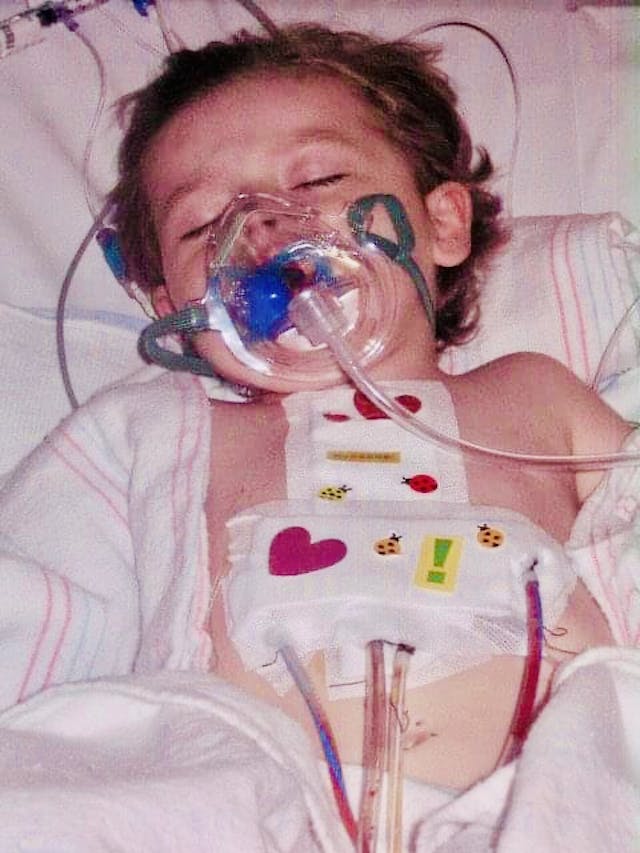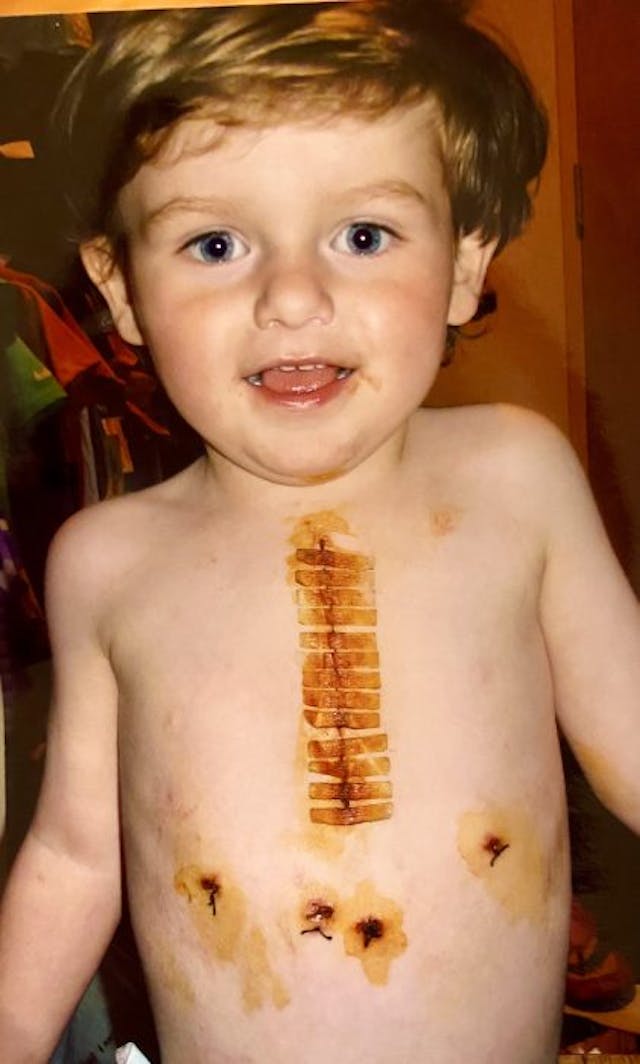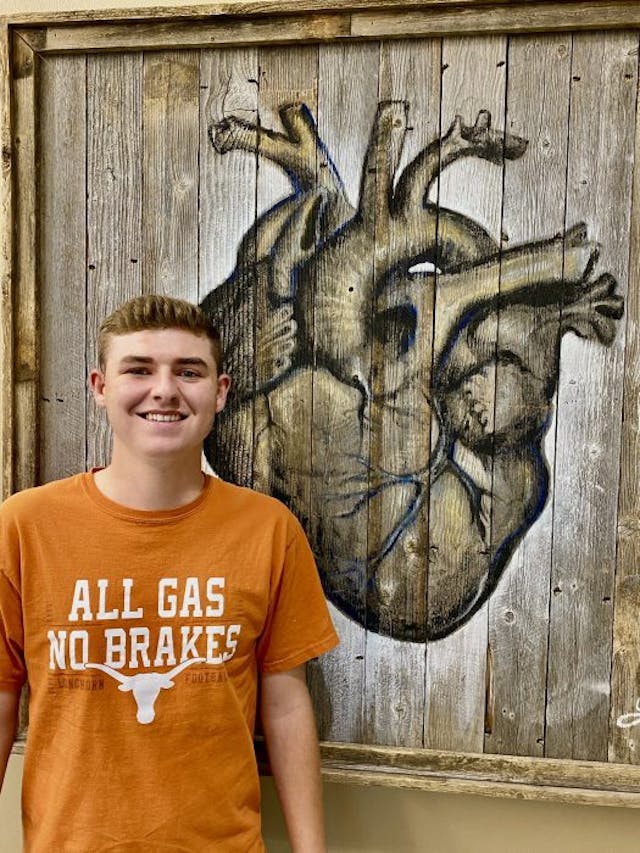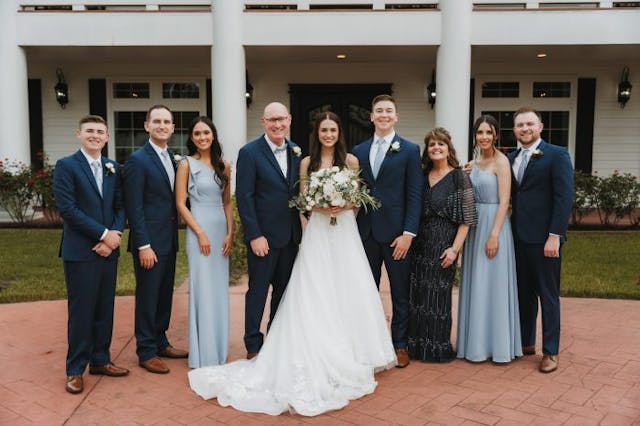
Indian officials crack down on illegal abortion kit sales
Angeline Tan
·
Human Interest·By Nancy Flanders
Diagnosed with a serious heart condition in the womb, Tate has beaten the odds
Cheri Lewis was pregnant with her fourth child when she and her husband Duane learned that their preborn son, Tate, had a life-threatening heart issue that was considered “incompatible with life” without corrective surgeries. Lewis was in the second trimester, and they were given three options: treat their son, don’t treat their son, or end their son’s life by abortion.
Getting the diagnosis
Lewis’ pregnancy had been very healthy with no complications when her OB/GYN in Paris, Texas, noticed a concern with Tate’s heart. After a follow-up scan four weeks later, they were referred to a specialist when Lewis was six months pregnant. That’s when the Lewis family learned that Seth had hypoplastic left heart syndrome, a condition in which the left side of the heart does not form correctly. That’s also when the Lewis family met the Rippentrop family, who received the same diagnosis for their preborn son Seth. The two families would build a lasting friendship as they faced the boys’ diagnoses.
With just a 40% survival rate for Tate, his parents moved forward knowing they would do what they could to help him.

“We were told that we had options and those options were to be sent home from the hospital with comfort care and of course, we were told that we could choose to abort the baby. But our cardiologist was like, ‘You wouldn’t want to do that.’ She had to present abortion but said we wouldn’t want to do it,” Lewis told Live Action News. “The third option was to have a series of surgeries. For us, it was never a matter of whether or not we were going to do anything but give him a chance for life. We felt like as long as we gave Tate the best chance of survival, then we were placing him in God’s hands and what was meant to be would be.”
Tate’s birth and surgeries
Tate was just five days old when he underwent the first of the three-phase heart surgery he needed.
The first step is known as the Norwood procedure. Babies with HLHS have a left ventricle and aorta that are too small to pump blood to the body. The Norwood procedure allows the right ventricle — which usually only pumps blood to the lungs — to also pump blood to the body. Tate was in the hospital for nine weeks following the surgery and nearly died at four and a half weeks old. His family never left his side.
“He became septic and his oxygen got down to 40 and they fought all night long to save his life. We went an entire night with his oxygen at 40 and we stood over him and cried and prayed and after several hours it was like a switch was flipped and he improved,” said Lewis.
At a few months old, Tate underwent the second phase of the surgery, the Glenn procedure. During this surgery, the surgeon disconnects the superior vena cava from the heart and connects it to the pulmonary artery to make the blood from the upper part of the body flow into the pulmonary artery, which takes blood to the lungs. Tate set a record for his recovery from the Glenn procedure. He was out of the hospital in less than 48 hours.
At age three and a half, Tate underwent the final phase of the surgery, the Fontan procedure, which aims to improve blood flow from the lower body to the lungs, decreasing the workload on the single ventricle, and improving oxygen levels. It was after this procedure that Tate had a stroke, which paralyzed a vocal cord and led to the use of a pacemaker.
“Tate is a walking miracle,” said Lewis.
Article continues below
Dear Reader,
Have you ever wanted to share the miracle of human development with little ones? Live Action is proud to present the "Baby Olivia" board book, which presents the content of Live Action's "Baby Olivia" fetal development video in a fun, new format. It's perfect for helping little minds understand the complex and beautiful process of human development in the womb.
Receive our brand new Baby Olivia board book when you give a one-time gift of $30 or more (or begin a new monthly gift of $15 or more).
Growing up
Lewis gives a lot of credit for Tate’s “normal” life to his three older siblings. “His siblings always were very protective but also challenged him to not make excuses for his situation and be the best he could be,” she said. “Having three active, smart siblings helped him to be the person that he is. They were a big part of his journey and they are his best friends even to this day. They taught him to never give up on himself and to go for it with all of his dreams.”
Today, two of them are physicians and one is attending school to be a physician’s assistant. They want to give back to the medical community that saved their brother’s life.

Tate is now a 21-year-old college student. He told Live Action News that his life has had challenges but that the support of his family and his time at Camp Moss, a camp for children with congenital heart issues helped him. Being around older children with heart conditions who were living, driving, and graduating served as motivation, he said.
Tate plays on the golf team at the University of Texas at Dallas and he has received honors as an All American Scholar Athlete. His goal is to work to help other people with heart conditions find careers. His roommate at college is his lifelong friend and fellow HLHS warrior Seth Rippentrop.
“One of the things I learned from Dr. Josh at Camp Moss is, ‘Know that you have a heart defect. Live like you don’t. Take care of your body, take your meds, and show up to your appointments, but don’t let it affect the day-to-day,'” said Tate. “There’s no reason to let it affect how you live your life because it’s out of your control. There’s nothing that we can do to change it. Might as well not let it affect you. Keep pushing yourself to do more.”

Tate brings that positive attitude to speaking events and also counsels children with HLHS online who are referred to him by cardiologists. “Realizing that you aren’t normal, unfortunately, you start realizing at that point that you have drawn an unlikely straw and you start realizing that there will be more surgeries and you overthink. I talk to [the kids] about how there are other ways to look at it other than ‘I’m the unlucky one.’ You start looking at it like, ‘Yes this is not the best, but I was chosen for this for a reason. I’m the strong one and I can go through this. I’m chosen because I’m strong enough. And I have the motivation to live with purpose with this defect,'” he explained.
Tate hopes people will read his story and feel hope and be encouraged not to give up because no one, not even a doctor, can say how things are going to go in a person’s life or how long a person is going to live. He wants children with HLHS to keep pushing to make their lives what they want them to be.

Cheri wants parents of children with HLHS or other conditions to remember to always be their child’s advocate.
“You have to go with your gut and realize there are going to be bumps in the road, but usually they are temporary and that’s just what it is: a bump in the road. But Tate always says he’s not going to let anything get him down,” she said. “We pray that God and technology will allow Tate to keep running the race. The future is really bright. I think Tate — he has a girlfriend now — and I think that technology is improving every single day and they know so much more that they are going to stay on top of it. We are excited for him and to see what blessings He has in store for him.”
Live Action News is pro-life news and commentary from a pro-life perspective.
Contact editor@liveaction.org for questions, corrections, or if you are seeking permission to reprint any Live Action News content.
Guest Articles: To submit a guest article to Live Action News, email editor@liveaction.org with an attached Word document of 800-1000 words. Please also attach any photos relevant to your submission if applicable. If your submission is accepted for publication, you will be notified within three weeks. Guest articles are not compensated (see our Open License Agreement). Thank you for your interest in Live Action News!

Angeline Tan
·
Human Interest
Cassy Cooke
·
Human Interest
Anne Marie Williams, RN, BSN
·
Human Interest
Bridget Sielicki
·
Human Interest
Melissa Manion
·
Human Interest
Lisa Bast
·
Activism
Nancy Flanders
·
Opinion
Nancy Flanders
·
Investigative
Nancy Flanders
·
Analysis
Nancy Flanders
·
Politics
Nancy Flanders
·